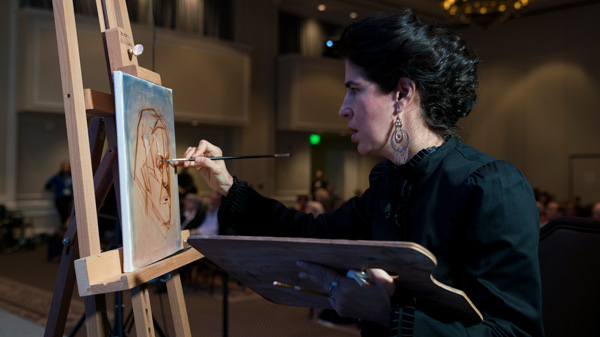
Realism Today celebrates the thousands of American artists who have been trained in traditional methods; and it is particularly significant because it offers yet another outlet of information and ideas for this booming field.
Sign up for the free Realism Today newsletter here!
About 16 years ago, I became enamored with the art emanating from 20 year-old students who passionately drew sculptural casts, copied the 19th-century lithographic plates of Charles Bargue, and utilized techniques established 500 years earlier. Like the modernists just over a century ago, these youngsters were considered outcasts by the art establishment.
Why? Because they were bucking postmodernist trends and returning to recognizable, well-executed imagery. My hunch was that they represented art’s future, as I recalled Andy Warhol’s prediction that “the course of art history would be changed if one thousand students could be taught Old Master drawing and painting techniques.”

Around 2003, I could find only a few masters teaching these techniques, including Jacob Collins in New York, Richard Lack in Minneapolis, and Daniel Graves, Charles Cecil, and Michael John Angel in Florence. The subsequent blossoming of these and other ateliers proved that many more youngsters sought technical virtuosity.
In 2006, I discovered that I was not alone in my enthusiasms: one evening I dined at the home of the New Jersey collectors Fred and Sherry Ross, who had also invited the museum director Peter Trippi. I had already launched Fine Art Connoisseur, and soon Peter joined our effort to shine brighter light on contemporary realism while also highlighting great realists of the past. It is the only magazine that juxtaposes old and new realism side by side, and we are thrilled that this encounter only confirms how strong the recent work is.
Today I see a break in the clouds. Thousands of American artists have been trained in traditional methods, and many are running their own ateliers, which now number well over a hundred nationally. Though most college art departments still teach “do what you feel” and don’t require technical skill, the smarter deans realize that the ateliers can no longer be ignored and thus are creating tradition-minded courses in order to compete.
The launch of Realism Today is particularly significant because it offers yet another outlet of information and ideas for this booming field. I often wonder why so many (smart) art lovers have not yet seen the contemporary realism we celebrate. It’s possible they don’t know these realists exist, or maybe they can’t understand why an artist would not automatically do something “new.”
Everyone who reads this newsletter has a key role to play in sharing the excellence of contemporary realism with others, and so we invite you to not only enjoy the content we bring you, but to also become an Ambassador so that we can continue to push this art movement forward. To do this, please forward this newsletter to a friend and invite them to subscribe and share our stories on social media and through email. We’ll even say thanks by giving you the opportunity to have your art featured here when five of your friends subscribe to Realism Today through the Ambassador program.
We enthusiastically salute those who acquire outstanding contemporary realist artworks, and we extend our applause to the artists who created them and to the dealers who sold them. Congratulations, thank you, and keep up the good work.
Sign up here to receive Realism Today, the free weekly e-newsletter for contemporary artists.




